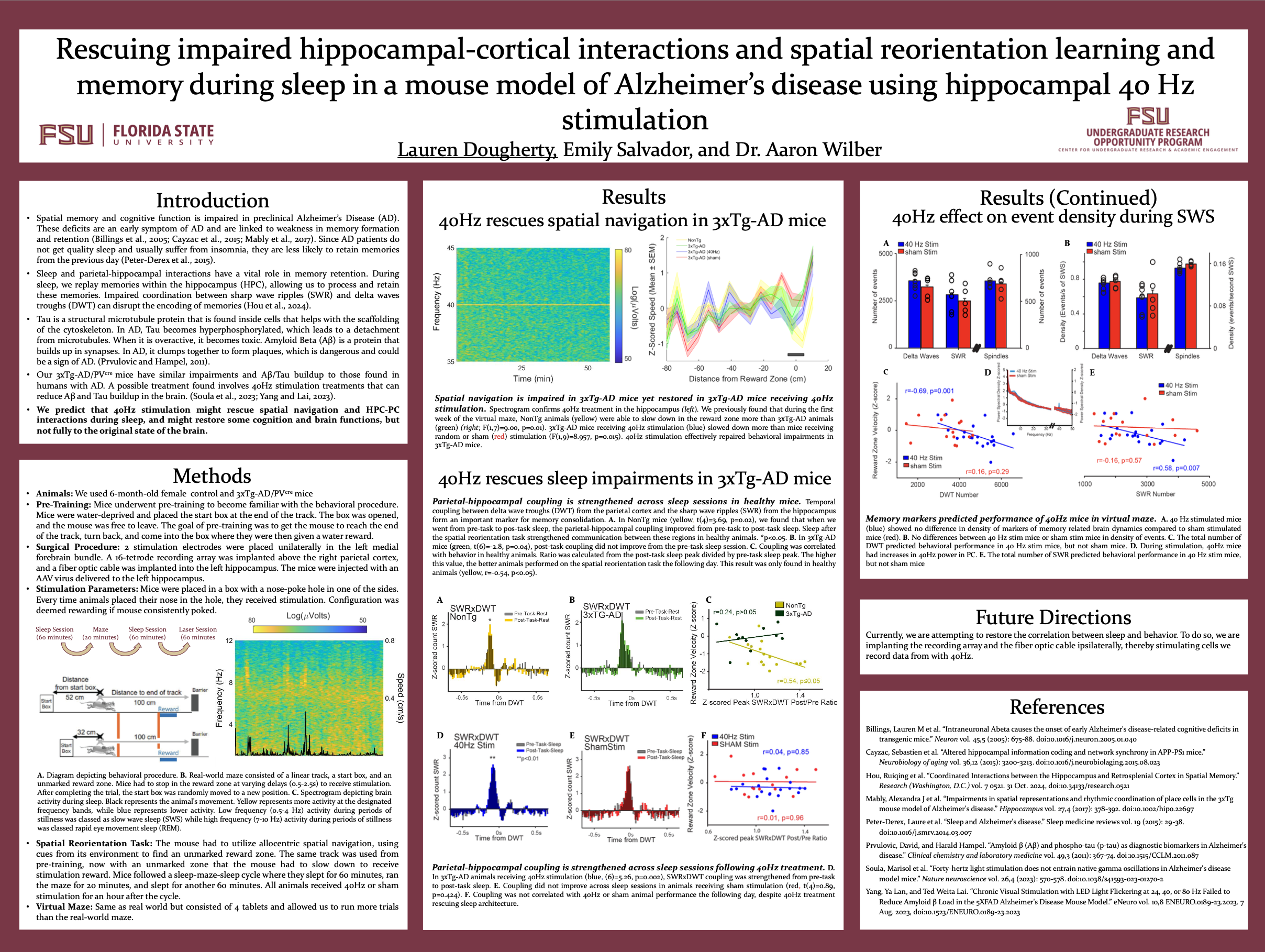Research Symposium
25th annual Undergraduate Research Symposium, April 1, 2025
Lauren Dougherty Poster Session 2: 10:45 am - 11:45 am/ Poster #181

BIO
My name is Lauren Dougherty and I am a second-year student from the Ft. Lauderdale area, majoring in Behavioral Neuroscience with a minor in Chemistry. I am currently assisting at the Wilber lab, where they are studying spatial memory and cognitive function in mice/rats with Alzheimer's. I am hoping to go to Physician Assistant or Anesthesiologist Assistant school after graduating.
Rescuing Impaired Hippocampal-cortical Interactions and Spatial Reorientation Learning and Memory During Sleep in a Mouse Model of Alzheimer’s Disease Using Hippocampal 40 Hz Stimulation
Authors: Lauren Dougherty, Emily SalvadorStudent Major: Behavioral Neuroscience
Mentor: Emily Salvador
Mentor's Department: Psychology Mentor's College: Arts and Sciences Co-Presenters:
Abstract
In preclinical Alzheimer’s Disease (AD), spatial memory and cognitive function is declined. Sleep and the relation between the hippocampus (HPC) and the parietal cortex (PC) have an extremely important role in memory retention. During sleep, memories are replayed within the hippocampus, which allows the processing and storage of information gathered from the previous day. The accumulation of amyloid beta plaques (A𝛽) and tau are a sign of AD in the brain. A𝛽 and its metabolites can damage signaling between neurons, while intracellular hyperphosphorylation of tau can lead to internal damage and neurotoxicity. Recent research has shown that stimulation of the brain at 40 Hz may reduce the pathology seen in AD. Using a 16-tetrode recording array implanted in 6-month-old 3xTg-AD/PVCre female mice, we monitored delta wave troughs (DWTs) and sharp wave ripples (SWRs) from the right PC and HPC. A fiber optic cable was also implanted in the right hippocampus, were mice received 1-hour 40 Hz or sham sessions daily. We previously found that the temporal coupling between SWRs and the DWTs was reduced in 3xTg-AD mice compared to healthy controls. In healthy controls, the strengthening of coupling from pre-task to post-task sleep was correlated with behavioral performance. This result was not found in 3xTg-AD mice. We recently found that 40 Hz optogenetic stimulation appears to restore HPC-PC coupling in 3xTg-AD mice, though this result no longer correlated with behavioral performance.
Keywords: Alzheimer's, Mice, Behavior, Sleep, Learning


